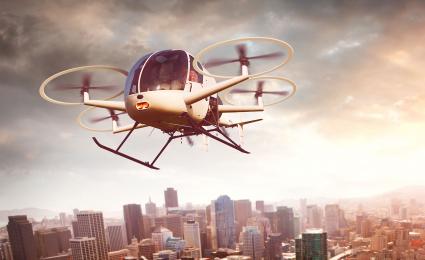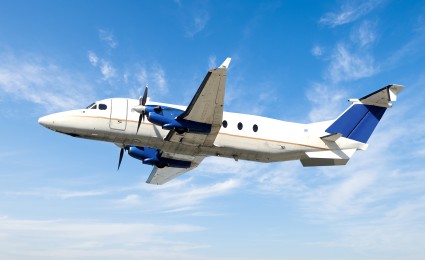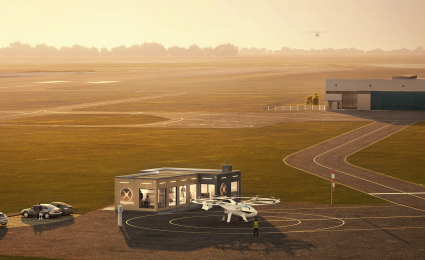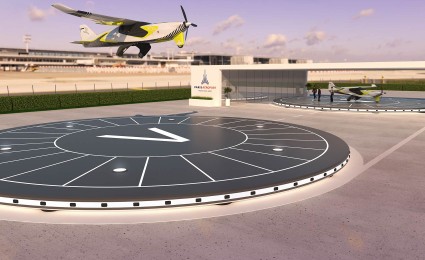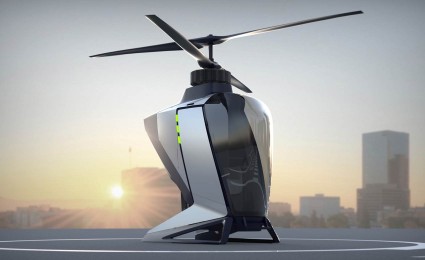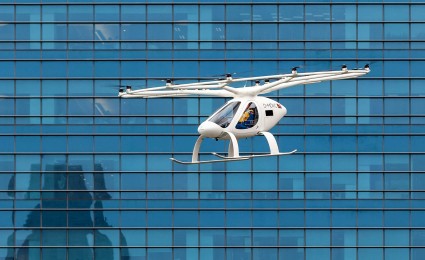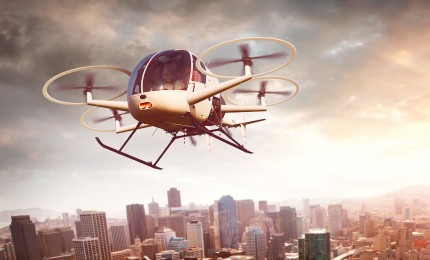Roland Berger advises the aerospace, defense and security industries. We support OEMs, suppliers, agencies and investors.


Urban Air Mobility: Why FlyNow aims to be the game changer in the Urban Air Mobility industry
By Stephan Baur and Manfred Hader
How 3D Mobility and autonomous passenger drones can be a solution to current traffic issues
The nascent UAM industry is a constantly evolving industry and it seems like new developments, new announcements and new partnerships are coming out every week. One such new company, emerging from stealth mode, is FlyNow. Self-titled as the "gamechanger" in the field of Urban Air Mobility, the Austrian startup wants to revolutionize urban transport by offering a cost-efficient autonomous VTOL aircraft. Read in our interview with Jens Steingräber, CFO of FlyNow, Dr. Markus Kampitsch, CTO of FlyNow, and Jan Jamaszyk, Head of Software & Controls of FlyNow, about their single-seater concept!
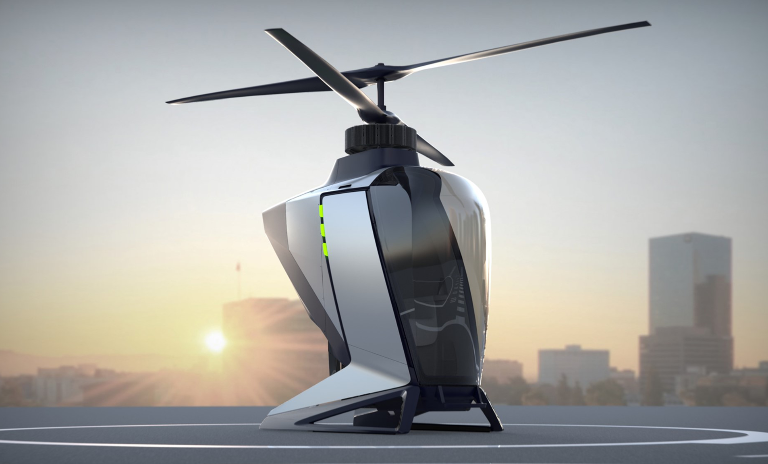
Why does FlyNow consider itself a "game changer"?
Jens Steingräber/Markus Kampitsch: Usually environmental protection, social affairs and profitability are diametrically opposed. FlyNow creates an approach that simultaneously serves these three requirements in a positive way: Environmental protection in the product itself through careful use of resources, in operation through the lowest possible energy consumption and zero emissions , and in social terms through an offer at the price of a taxi ride and thus accessible to everyone.
FlyNow has set out to be highly profitable with the first generation of its air taxi. As a concept that is strictly tailored to its application our single-seater meets all the requirements an electric aircraft for urban areas needs to fulfil. FlyNow combines highest safety levels with premium comfort at an affordable price. With the data obtained during operation, FlyNow enables the path from fully automated to autonomous flying and will hold a strong position in this area, especially in economic terms. Even in the first generation, profitability is achieved well above the benchmark of the automotive industry with an unbelievably low investment requirement.
Can you elaborate on the profitability aspect?
Jens Steingräber: With a start of production in the first quarter of 2024 and a market entry in the following quarter, FlyNow will achieve a return on investment in the second year of 2025 just by selling the drone.
This is already achieved at a price equivalent to an upscale mid-range vehicle. This is a business model with significantly higher profitability even than the automotive industry benchmark, not to mention aviation industry level. Here, of course, our low production costs concept suits us.
The operational business of drones has an even higher positive business case with prices at the level of a taxi ride in Munich. This pricing is absolutely unique. FlyNow will be directly involved in the operational business and create further attractive business models through the intensive service business that is essential in aviation.
A third, more future-oriented, highly interesting financial aspect is the business with sensor and usage data during flight operations, which is to be assessed as “the enabler” for the later business with autonomously flying UAM. Whether you use it yourself, license it to a competitor or sell it, this is always a very lucrative business area.
All of this is made possible by our unique concept secured by appropriate patents.
Can you describe your single-seater VTOL concept in more detail?
Markus Kampitsch: Our concept is consistently designed for the use in the field of urban air mobility. Since vehicles are occupied by less than 1.3 people on average, it is initially designed to transport one person including luggage.
"Simple solutions and high safety standards do not contradict each other, they need one another."
The core and distinguishing feature of our drone is the eye-catching, counter-rotating, highly efficient rotor system with its redundant coaxial electric drive. With it, the FlyNow drone represents an absolute benchmark not only in terms of energy efficiency but with less than 55 dB (A) at an altitude of 150 m also with respect to noise emissions which is essential for operation in urban areas.
The central arrangement of the lift and vectored thrust producing system not only ensures an advantageous low center of gravity, which results in stable flight and thus low and energy-efficient flight control effort, but also a design that can completely dispense with cost, weight and maintenance-intensive structural elements such as propeller arms.
The amount of energy that can be stored in batteries with today's technology is quite limited, so it is essential to maximize the payload and avoid unnecessary weight wherever possible. The provision of rarely used optional seats represents such to be avoided additional weight. Due to this uncompromising design, it is possible without any problems to meet the operational requirements with the currently available state of existing battery technology.
A cargo version being capable to transport up to a standard Euro palette is as well an integral part of our development roadmap, as a hydrogen fuel cell driven version. Since we pursue a consistent platform and vehicle family strategy right from the start, our vehicle architecture is very flexible and allows to integrate a corresponding H2 pressure tank including the fuel cell system without any major modifications of the fuselage. As this is much more capable from an energy perspective , also a two-seater variant makes perfect sense and can be realized with just very few modifications which can be easily implemented in the existing modular system and is scheduled from 2026 onwards.
How do you ensure safety of your concept?
Markus Kampitsch: The essence of our company philosophy is simplicity and straightforwardness, which is reflected in all aspects. A component that is not there causes neither weight nor costs nor can it fail.
In order to be able to offer commercial flights over inhabited areas, an aircraft must be approved according to the enhanced category. The safety requirements that apply here correspond to those of an airliner, so there are of course limits to simplification. The future regulations to be applied for safe eVTOL operation are currently under discussion and will probably be adopted to the specific conditions of low altitude and speed operation. We take the existing ultra-high safety requirements into account by analyzing possible failure scenarios according to the usual procedures in aviation and deriving and implementing the necessary technical solutions. For example, both the drive train and the power supply are designed with multiple redundancies, however, the simple solution is also preferred here.
Is your concept ready to support automated or even autonomous flying?
Markus Kampitsch: As a single-seater means of passenger transport, the omission of the pilot is not an option, but necessary in order to make our service available to the general public. The flight control is therefore - like everything else - fully automatic. In aviation, automated flight and navigation functions have been carried out for several decades. In the event of a fault, however, the pilot is fully responsible and liable. The next evolutionarily logical step is therefore to take the pilot out of the equation, and which is meanwhile state of the public discussion.
Operated automatically the FlyNow PAV is dependent on a superordinate ecosystem, which provides both the flight planning and the coordination with official ATM (Air Traffic Management).
The individual flight plan, managed by an automated process and thoroughly created by an official public central server, guarantees that the flight can be managed reliably and without conflict in interaction with cooperating air traffic, i.e. vehicles operating under the same set of rules.
This represents the current status of the discussion and is essentially seen in this way by FAA, EASA and also NASA and is therefore - with a high degree of probability - the scenario to which one will have to be prepared.
A major advantage of a VTOL is that in the event of an unforeseen incident, it is possible to stop in the air at any time, i.e. to hover, so that a complex situational decision-making process regarding evasive maneuvers taking into account follow-up events and thus autonomy in the sense of an AI-controlled flight is not really necessary at any time.
The aircraft can therefore be equipped as simply as possible in this regard and with as little “intelligence” as is absolutely necessary and still reliably fly the respective mission.
"The technology is already there, we just need to use it in a safe and responsible manner!"
Jan Jamaszyk: The flight itself takes place between two predefined hubs, which in turn is a relatively simple flight task.
The aircraft thus flies predefined routes fully automatically as described, but does not make any independent decisions, as would be the case in autonomous operation. FlyNow does not want to reinvent the wheel, but uses existing and proven technology to take the pilot out of the loop where he serves as a fall-back level only. This does not require any new technology, just more redundancy and a well-thought-out safety concept, which FlyNow implements without compromise even during the prototype development.
Since we have been working very closely with the certifying authorities from the start, we are firmly convinced that sensible and, above all, economically lucrative first applications will be eligible for approval very soon. We are experiencing great interest from many sides and there is already a high level of desirability in the market. Individual countries and regions are also showing great interest.
You mentioned data as a revenue source. Can you comment on that?
Jan Jamaszyk: Due to the cost structure described, the flight itself is profitable even at a very low-ticket price. However, another lucrative business area is not only the transport of people or goods, but rather the acquisition of operational data.
The possibility of using automated drones and therefore being able to implement pilotless operation at an early stage puts us in a position to generate the necessary database which is essential for learning neural networks for the long-term development goal: autonomous flight.
For the training of AI algorithms, approx. 90% data from the Operational Design Domain (ODD), i.e. the real world, is required. Conventional approaches rely on data collection fleets, which, as of today still have to be flown by pilots and therefore without generating revenue.
FlyNow, on the other hand, will use drones equipped with appropriate sensors to build up this database from the first operational flight. Due to the fact that the operation then is not manually piloted but automated from the start, this data is of very high quality for the intended application.
"It is not the question if this incredible business will take place in the near future, but who and where the players will be."
Why should countries or regions support UAM projects and yours in particular?
Jens Steingräber: Every mobility concept, for example road traffic or rail, reaches its limits at some point. When overloaded, the effectiveness suddenly drops dramatically, be it due to traffic jams or delays.
If you take out just this small percentage exceeding the design parameters, traffic will flow normally again. Example: as soon as an intersection designed for a maximum of 10 vehicles per traffic light phase encounters the 11th vehicle, this guy becomes the seed point for the build up of the tailback. Over a certain period of time, this tailback increases in length and in the end paralyzes the downstream traffic: the well-known rush hour situation.
If, however, it is possible to remove this small percentage of overload causing this dramatic effect using 3D Mobility, the situation will relax considerably on the ground and whole geographic regions will have significantly relief also in terms of less environmental pollution.
Ground based infrastructure has reached its limits without any degree of freedom to expand as there is simply no space left. Given that growth figures of the worldwide car population alone indicate another 30% increase within the next 10 years, i.e. from today’s 1.5 to 2 billion vehicles in 2030 the collapse of the 2D mobility infrastructure seems inevitable.
However, without a certain volume in the 3D Mobility market hardly any relief for today's overburdened mobility concepts can be achieved. Many densely populated regions have been waiting a long time for the mentioned positive effect that mobility as a whole would become more efficient.
Is your concept also a “Game changer” for the end user?
Jens Steingräber: Yes, FlyNow presents itself as a game changer in the UAM sector since we will be the first to enter the market and enable a new mode of transportation for everyone! We will enter the market soon with our 1-seater vehicle and will later launch and introduce also a 2-seater model. We have a strong and senior leadership team with experience from both the aerospace and automotive world and we will leverage this experience to ensure timely certification and efficient mass production of our vehicles. This will ultimately ensure a very competitive cost basis We will be able to offer 3D mobility - which is a premium service - at the price of two-dimensional mobility. We are not intending to build the "Bentley of the sky", but rather the "VW Air Golf" for everyone, in compliance with the strictest environmental aspects without any compromises in terms of safety and comfort. In this way we open the door to make this kind of future mobility a reality.






